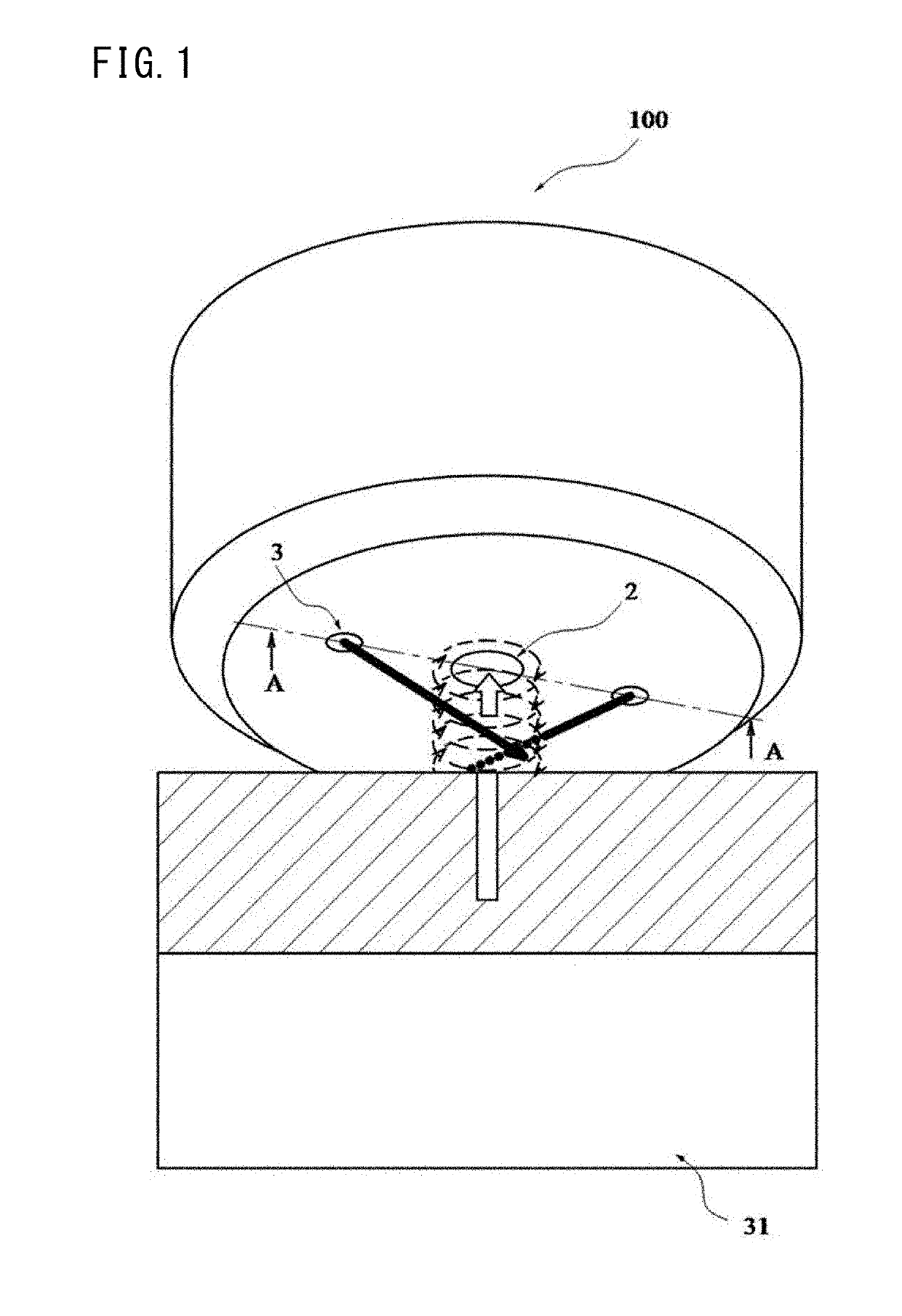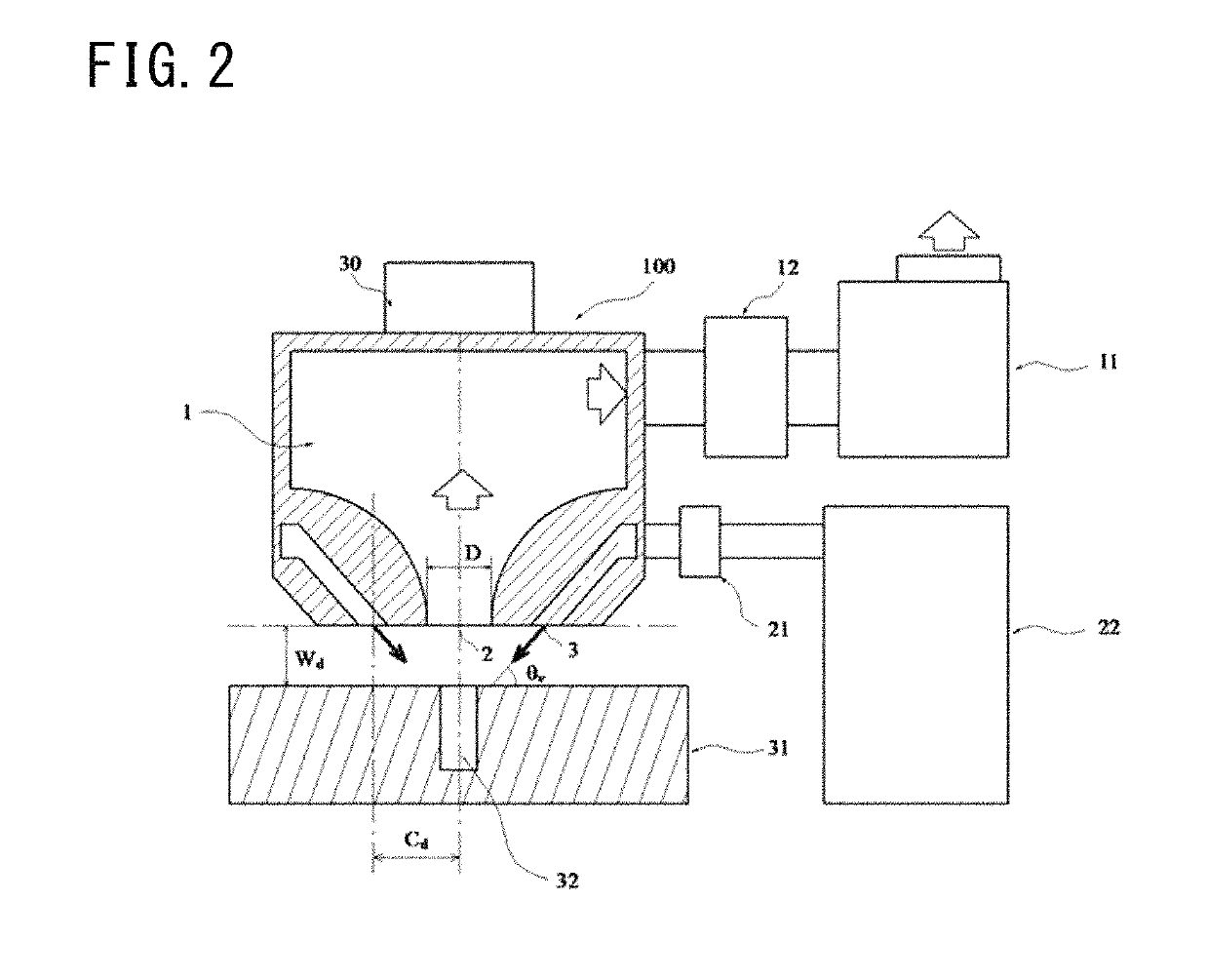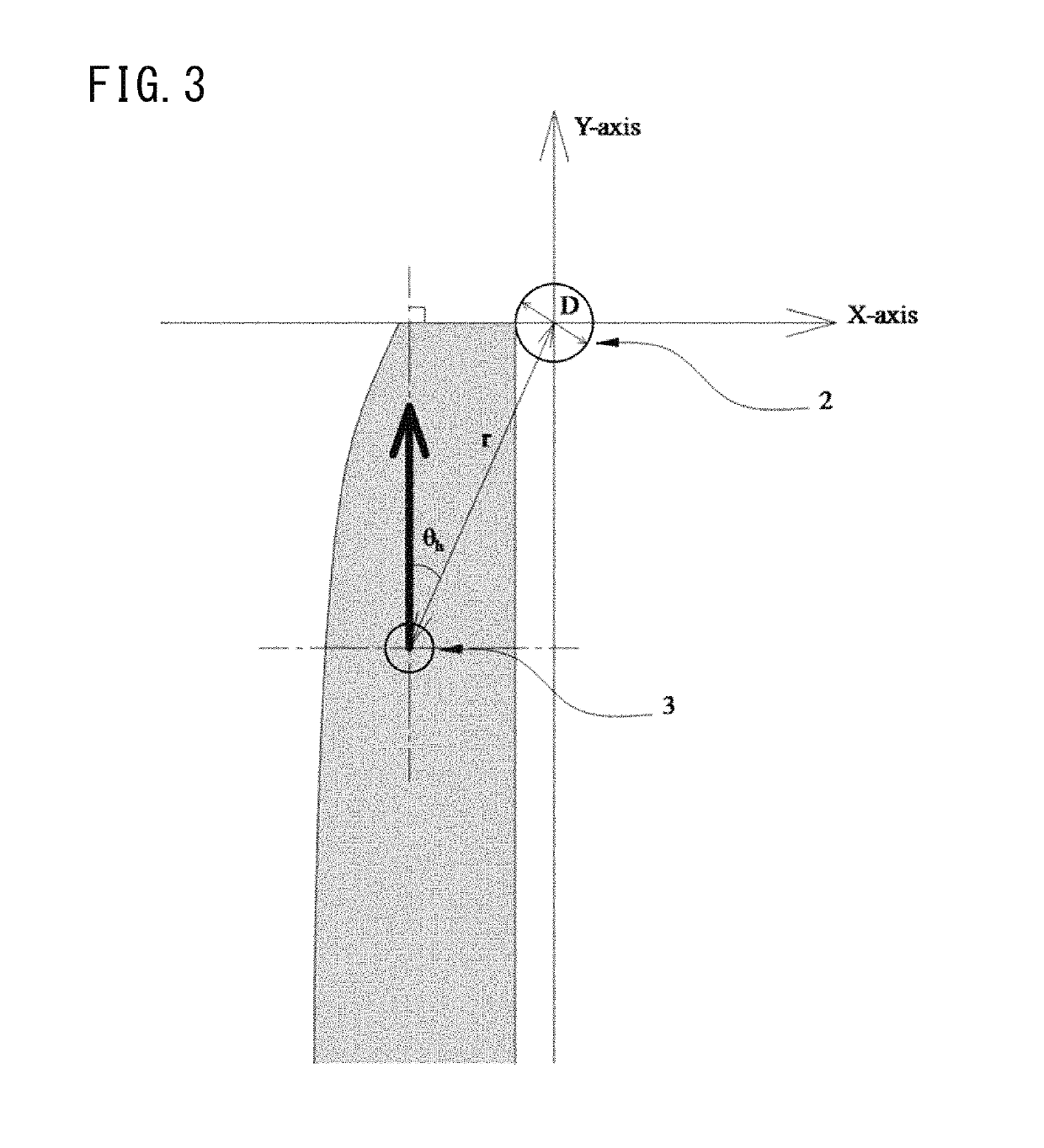Suction method, suction device, laser processing method, and laser processing device
a laser processing and suction device technology, applied in the direction of chemistry apparatus and processes, manufacturing tools, welding/soldering/cutting articles, etc., can solve the problems of insufficient suction force, limited suction force, and inability to obtain a high pressure reduction effect, so as to increase the suction speed of the suction product, prevent the efficiency of the processing from being lowered, and high recovery rate
- Summary
- Abstract
- Description
- Claims
- Application Information
AI Technical Summary
Benefits of technology
Problems solved by technology
Method used
Image
Examples
example 1
[0095]The results of an experiment on the pressure reduction effect of the suction device 100 as discussed above will be explained.
[0096]FIG. 2 is a vertical cross-sectional configuration diagram on the suction device 100 in the example. In the suction device 100 of the example, there were installed the suction port 2 sucking a gas into the pressure reduction chamber 1, the exhaust mechanism 11 exhausting the gas within the pressure reduction chamber 1, the jetting port 3 jetting the gas, the flow rate adjustment mechanism 21 adjusting the flow rate of the gas jetted, the gas introduction mechanism 22 introducing the gas into the jetting port 3 via the flow rate adjustment mechanism 21, and the operating distance adjustment means 30.
[0097]The suction device 100 had a structure in which the suction port 2 and the jetting port 3 were integrally formed, and was produced by a multilayer molding method. The shapes of the suction port 2 and the jetting port 3 were circular flat surfaces, ...
example 2
[0108]Next, the results of the observation of a flow site formed by the suction device 100 of Example 1 will be explained.
[0109]The configuration of the suction device 100 was the same as in Example 1, and model B in Table 1 was used. The target 31 was a transparent acrylic flat plate, and tracer particles for visualization were dispersed on the surface.
[0110]A camera was installed below the transparent acrylic flat plate such that the suction port 2 disposed in the bottom surface of the suction device 100 was able to be observed through the transparent acrylic flat plate. In order for a surface parallel to the bottom surface of the suction device 100 to be photographed, laser light of visible light was formed into the shape of a sheet parallel to the bottom surface of the suction device 100 and was caused to enter between the bottom surface of the suction device 100 and the transparent acrylic flat plate. In this way, scattered light when the tracer particles were absorbed by the s...
example 3
[0113]Then, the results of an experiment on the evaluation of the recovery rate of a suction product in the suction device 100 of Example 1 will be explained.
[0114]The configuration of the suction device 100 was the same as in Example 1, and model B in Table 1 was used.
[0115]The target to be sucked in the present example was water, and a concentration trap was used as the dust collection mechanism 12.
[0116]As in Example 1, the through-hole 32 having a diameter of 1 mm was formed in the surface of the target 31, and a hollow tube was made to communicate therewith. The tube was coupled to a container that stores the water serving as the target to be sucked. The water surface in the container was open to the atmosphere.
[0117]As a method of evaluating the recovery rate of the suction product, the water within the container was sucked and recovered using the suction device 100 as a method of evaluating the recovery rate of the suction product, and the recovery rate was calculated from a ...
PUM
 Login to View More
Login to View More Abstract
Description
Claims
Application Information
 Login to View More
Login to View More - R&D
- Intellectual Property
- Life Sciences
- Materials
- Tech Scout
- Unparalleled Data Quality
- Higher Quality Content
- 60% Fewer Hallucinations
Browse by: Latest US Patents, China's latest patents, Technical Efficacy Thesaurus, Application Domain, Technology Topic, Popular Technical Reports.
© 2025 PatSnap. All rights reserved.Legal|Privacy policy|Modern Slavery Act Transparency Statement|Sitemap|About US| Contact US: help@patsnap.com



